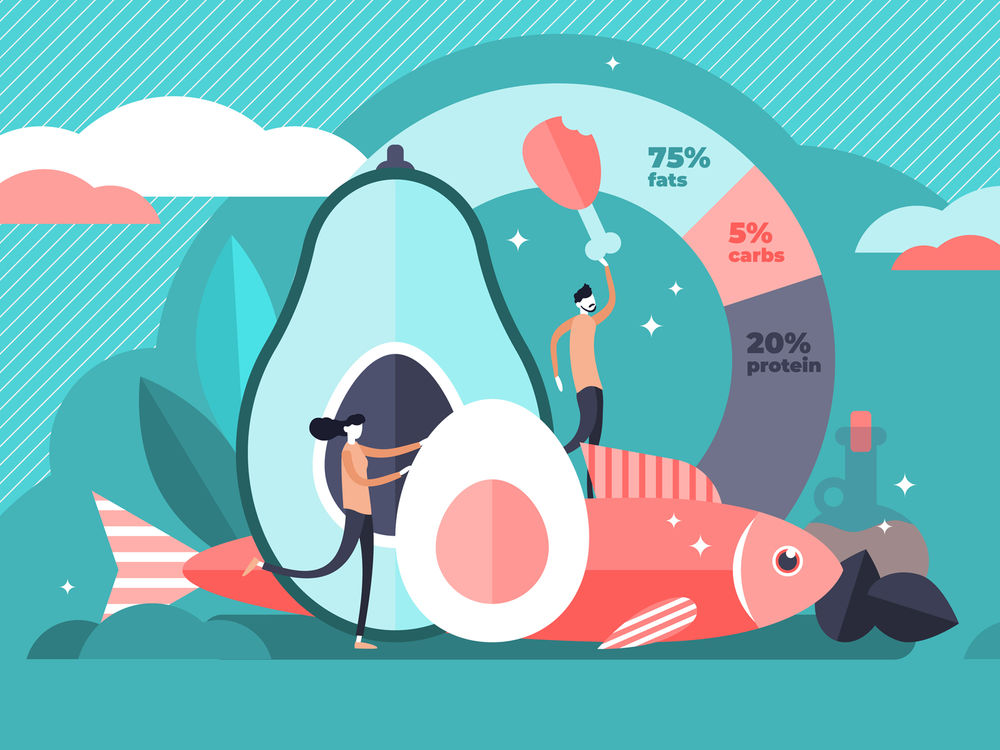The ketogenic diet has acquired somewhat of vogue status in the Western world of late, as arguably the best eating regime for keeping your percentage body fat at minimum levels. The paradoxical key to the keto diet; eat lots of fat. But eating lots of red meat, eggs, nuts, cheese and avocados alone won’t do the trick. You’ve got to cut down on carbohydrates too (generally no more than 50g a day). Now in Japan – a nation that not only loves its carbs, but really excels at presenting them in the most delicious of ways – avoiding carbs is a none too easy task.
Over the course of this article I don’t intend to pontificate or preach about my own dietary choices, but merely to give a brief overview of the keto diet and to offer a few tips on how you can eat keto in Tokyo too.
What is the Ketogenic Diet?
The Ketogenic (or “keto”) diet allows your body to produce molecules called ketones, an alternative fuel source that the body uses in the absence of glucose (which comes mainly from carbohydrates). Ketones are produced when you ingest a diet of roughly 80% fat (excess protein will also be converted into sugars).
In short, research suggests that the keto diet allows your body to run purely on fat stores – a state of functioning known as ketosis – which helps you shed any excess blubber. Other positive effects are less hunger – due to the absence of the effect that large portions of carbohydrates have on your insulin levels – a steady supply of energy and a feeling of being more focused and alert.
If you want to learn more about the keto diet, I’d recommend reading the works of the investigative science journalist, Gary Taubes. His book, How We Get Fat and What to do About It, is a particularly compelling read, and far more objective than its decidedly preachy title may infer.
How to Eat Keto in Tokyo
Arguably my favorite thing about the keto diet is that there’s less of a focus on calorie intake. I have always been quite a gluttonous sort, so stumbling upon a diet that enabled me to eat as much cheese and red meat as I so desired, in lieu of doughy foods, was like a serendipitous gift of mana from food heaven.
When going out for food in Tokyo, avoiding carb-rich foods is actually not as difficult as you may think. Snacking on juicy chicken thighs, tackling a full grill of sizzling red meat in a yakiniku house, slurping up a pot full of meat and leafy veg swimming in a fatty nabe, shabu shabu or sukiyaki broth, or demolishing a fried menagerie of aquatic creatures by the boatload are well within the realms of the keto diet. All it stipulates is that you don’t mop them up with rice, noodles and the likes.
Embrace Your Local Imported Goods Store
If you want to eat keto in Tokyo, a local imported goods store can be your best friend. Yes they are expensive, but they tend to have a far vaster selection of fatty nuts and unsweetened nut butters, rich red meats, full-fat cheeses and leafy green veg than your standard Japanese supermarket or convenience store. And their selections of healthy oils can be especially tantalising. My local in Kita Senju has avocado oil, coconut oil, Italian and Greek olive oils, medium-chain-triglyceride (MCT) oil and more.
MCT oil is a particularly utilitarian foodstuff when on the keto diet. It is effectively a distilled version of all the healthy fats in coconut oil and it can be applied to anything from meat and salads to smoothies and coffee. Family Mart even sells an MCT oil coffee called, rather oxymoronically, Butter Coffee, which is infinitely tastier than you may presume at first glance, and continuously puts a bit of zip into my morning waking ritual.
Cook with Carbohydrate Alternatives
A good way to chop down on carbohydrates is by eating “pseudo-carbs”, which is essentially just cooking with healthy alternatives. Here are a few examples”
• Cauliflower rice: This is super easy to make at home; all you need is cauliflower and a blender. And though it may infuriate sushi purists, there are even restaurants in Tokyo that now make sushi with cauliflower rice instead of the standard grain. Gonpachi Nori-Temaki Harajuku was said to be the first in the country to offer this alternative.
• Spiralised vegetables: Buying a cheap spiraliser (Tokyu Hands stock several varieties) and using it to make noodles out of zucchini, eggplants and various other popular Japanese vegetables is one of the best alternatives to flour-based noodles or pasta.
• Swap flour for cheese: Swapping out flour for cheese or cream cheese is a great way to make low-carb pizza, pancakes and many other traditionally doughy delights.
Final Tip: Try a Keto Cookbook
A common struggle with the keto diet is making full meals without carbs. At Kinokuniya bookstore in Tokyo, I acquired a keto cookbook – The Keto Reset Diet Cookbook by Mark Sisson – which has been an excellent source of inspiration for cooking delicious high-fat, low-carb meals. Sometimes you may have to substitute an ingredient or two (or search the web to try and get it delivered), but if you like cooking, and you’re on the keto diet, I highly recommend it.









